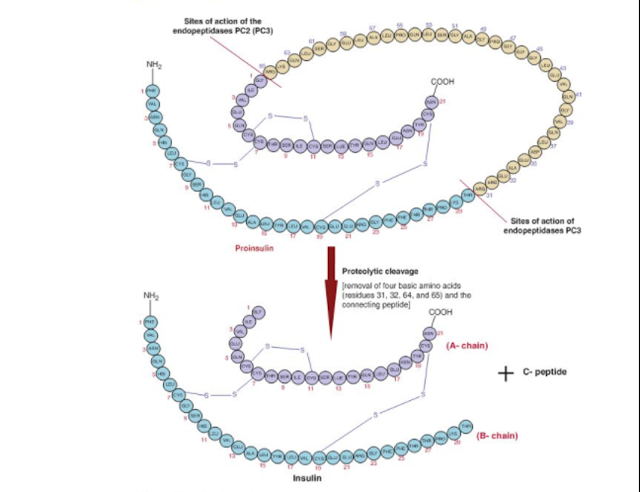A
ACCULTURATION
ACTION SCIENCE
ACUTE CARE OF THE ELDERLY
ADDICTION CARE
ADHERENCE/COMPLIANCE
ADOLESCENT HEALTH
ADVANCE DIRECTIVES
AGEISM
ALZHEIMER’S DISEASE
ANIMAL-ASSISTED THERAPY
APPLIED RESEARCH
B
BASIC RESEARCH
BEHAVIORAL RESEARCH
BIOFEEDBACK
BOYKIN AND SCHOENHOFER: NURSING AS CARING THEORY
BREASTFEEDING
C
CANCER IN CHILDREN
CARDIOVASCULAR RISK FACTORS
CAREGIVER
CARING
CASE STUDY METHOD OF RESEARCH
CAUSAL MODELING
CEREBRAL ISCHEMIA
CHILD AND ADOLESCENT DELINQUENTS
CHILDBIRTH EDUCATION
CHILD LEAD EXPOSURE LEVELS
CHRONIC ILLNESS
CINAHL DATABASE
CLINICAL CARE CLASSIFICATION SYSTEM
CLINICAL DECISION MAKING
CLINICAL JUDGMENT
CLINICAL NURSING RESEARCH
CLINICAL PREVENTIVE SERVICES
CLINICAL TRIALS
COGNITIVE APPRAISAL
COHORT DESIGN
COLLABORATIVE RESEARCH
COMFORT THEORY
COMMUNITY MENTAL HEALTH
COMPARATIVE EFFECTIVENESS RESEARCH
COMPLEMENTARY HEALTH APPROACHES
CONCEPT ANALYSIS
CONCEPTUAL MODEL
CONTENT ANALYSIS
CONTINUING CARE RETIREMENT COMMUNITIES
CORONARY ARTERY BYPASS GRAFT SURGERY
COST ANALYSIS OF NURSING CARE
CRITICAL CARE NURSING
CULTURAL/TRANSCULTURAL FOCUS
D
DATA ANALYSIS
DATA-COLLECTION METHODS
DATA MANAGEMENT
DATA STEWARDSHIP
DELIRIUM
DELPHI TECHNIQUE
DEPRESSION AND CARDIOVASCULAR DISEASES
DEPRESSION IN FAMILIES
DEPRESSION IN OLDER ADULTS
DEPRESSION IN WOMEN
DESCRIPTIVE RESEARCH
DIABETES
DISCOURSE ANALYSIS
DOCTORAL EDUCATION
E
EATING DISORDERS
ELDER MISTREATMENT
ELECTRONIC NETWORK
EMERGENCY NURSING
EMPATHY
END-OF-LIFE PLANNING
ENTERAL TUBE PLACEMENT
EPILEPSY
ETHICS OF RESEARCH
ETHNOGERIATRICS
ETHNOGRAPHY
EVALUATION
EVIDENCE-BASED PRACTICE
EXPERIMENTAL RESEARCH
EXPLORATORY STUDIES
F
FACTOR ANALYSIS
FAILURE TO THRIVE (CHILD)
FALLS
FAMILY CAREGIVING AND THE SERIOUSLY MENTALLY ILL
FAMILY HEALTH
FATIGUE
FEMINIST RESEARCH METHODOLOGY
FETAL MONITORING
FEVER
FITZPATRICK’S LIFE-PERSPECTIVE RHYTHM MODEL
FORMAL NURSING LANGUAGES
FUNCTIONAL HEALTH PATTERNS
G
GENETICS
GLOBAL NURSING RESEARCH
GRANDPARENTS RAISING GRANDCHILDREN
GRANTSMANSHIP
GROUNDED THEORY
H
HEALTH CARE–ASSOCIATED INFECTIONS
HEALTH CONCEPTUALIZATION
HEALTH DISPARITIES: FOCUS ON RACIAL AND ETHNIC MINORITIES
HEALTH POLICY AND HEALTH SERVICES DELIVERY
HEALTH SERVICES RESEARCH
HEMODYNAMIC MONITORING
HENDERSON MODEL
HERMENEUTICS
HISTORY OF NURSING RESEARCH
HIV/AIDS CARE AND TREATMENT
HIV RISK BEHAVIOR
HOME CARE TECHNOLOGIES
HOME HEALTH SYSTEMS
HOMELESS HEALTH
HOSPICE
HYPERTENSION
I
IMMIGRANT WOMEN
INSTITUTIONAL REVIEW BOARD AND INFORMED CONSENT
INSTRUMENTATION
INSTRUMENT TRANSLATION
INTERNATIONAL CLASSIFICATION OF NURSING PRACTICE
INTERPERSONAL COMMUNICATION
J
JOB SATISFACTION
JOHNSON’S BEHAVIORAL SYSTEM MODEL
K
KANGAROO CARE (SKIN-TO-SKIN CONTACT)
KING’S THEORY OF GOAL ATTAINMENT
L
LEININGER’S THEORY OF CULTURE CARE DIVERSITY AND UNIVERSALITY
M
MATERNAL ANXIETY AND PSYCHOSOCIAL ADAPTATION DURING PREGNANCY
MEASUREMENT AND SCALES
MENOPAUSE
MENTAL HEALTH IN PUBLIC-SECTOR PRIMARY CARE
MENTAL STATUS MEASUREMENT
MENTORING
META-ANALYSIS
MIDDLE RANGE THEORIES
MILD COGNITIVE IMPAIRMENT
MORAL DISTRESS
MORAL RECKONING
MOTHER–INFANT/TODDLER RELATIONSHIPS
MUSIC THERAPY
N
NARRATIVE ANALYSIS
NATIONAL INSTITUTE OF NURSING RESEARCH
NEUMAN’S SYSTEMS MODEL
NEUROBEHAVIORAL DEVELOPMENT
NEWMAN’S THEORY OF HEALTH
NIGHTINGALE, FLORENCE
NURSE ENGAGEMENT
NURSE-LED GROUP CLINIC VISITS
NURSE AND PHYSICIAN INTERDISCIPLINARY COLLABORATION
NURSE STAFFING
NURSING ASSESSMENT
NURSING DIAGNOSES, INTERVENTIONS, AND OUTCOMES
NURSING EDUCATION
NURSING INFORMATION SYSTEMS AND INFORMATICS
NURSING OCCUPATIONAL INJURY AND STRESS
NURSING PRACTICE MODELS
NURSING PROCESS
NUTRITION IN THE ELDERLY
NUTRITION IN INFANCY AND CHILDHOOD
O
OBESITY
OBSERVATIONAL RESEARCH DESIGNS
OREM’S SELF-CARE THEORY
ORGANIZATIONAL CULTURE
ORGANIZATIONAL DESIGN
OSTEOPOROSIS
OUTCOME MEASURES
P
PAIN
PALLIATIVE CARE
PARENTING
PARSE’S HUMANBECOMING SCHOOL OF THOUGHT
PARTICIPANT OBSERVATION
PATIENT CARE DELIVERY MODELS
PATIENT CONTRACTING
PATIENT EDUCATION
PATIENT ENGAGEMENT AND PATIENT-CENTERED CARE
PATIENT SAFETY
PATIENT SATISFACTION
PEDIATRIC PRIMARY CARE
PENDER’S HEALTH-PROMOTION MODEL
PEPLAU’S THEORETICAL MODEL
PHENOMENOLOGY
PHILOSOPHY OF NURSING
PHYSICAL RESTRAINTS
PHYSIOLOGY
PILOT STUDY
POPULATION HEALTH
POSTPARTUM DEPRESSION
PREGNANCY
PREVENTION OF PRETERM BIRTH, PRETERM LABOR, AND LOW BIRTH WEIGHT
PRIMARY NURSING
Q
QUALITATIVE RESEARCH
QUALITY OF CARE
QUALITY OF LIFE
QUALITY AND SAFETY EDUCATION FOR NURSES
QUANTITATIVE RESEARCH
QUASI-EXPERIMENTAL RESEARCH
R
RELIABILITY
REMINISCENCE
REPLICATION STUDIES
RESEARCH DISSEMINATION
RESEARCH INTERVIEWS (QUALITATIVE)
RESEARCH IN NURSING ETHICS
RESEARCH UTILIZATION
RESOURCEFULNESS
RESPONSIVENESS
ROGERS’S SCIENCE OF UNITARY HUMAN BEINGS
ROY ADAPTATION MODEL
RURAL HEALTH
S
SAMPLING
SCHIZOPHRENIA
SECONDARY DATA ANALYSIS
SELF-EFFICACY
SELF-MANAGEMENT
SELF-TRANSCENDENCE
SERIOUS MENTAL ILLNESS
SHIVERING
SIMULATION
SLEEP SCIENCE
SMOKING CESSATION
SNOMED CLINICAL TERMS
SOCIAL SUPPORT
SPIRITUALITY
STATISTICAL TECHNIQUES
STORY THEORY
STRESS
STROKE
STRUCTURAL EQUATION MODELING
SUBSTANCE USE DISORDERS IN PROFESSIONAL NURSES
SYMPTOM MANAGEMENT THEORY
SYSTEMATIC REVIEW
T
TELEHEALTH
TERMINAL ILLNESS
THEORETICAL FRAMEWORK
THERMAL BALANCE
TIME SERIES ANALYSIS
TRANSITIONAL CARE
TRANSITIONS AND HEALTH
TRANSLATIONAL RESEARCH
TRIANGULATION
U
UNCERTAINTY IN ILLNESS
UNLICENSED ASSISTIVE PERSONNEL
V
VALIDITY
VETERANS’ HEALTH
VIOLENCE
VIRTUAL NURSE CARING
VULNERABLE POPULATIONS
W
WANDERING
WATSON’S HUMAN CARING SCIENCE
WEIGHT MANAGEMENT
WELLNESS
WOMEN’S HEALTH
WORKPLACE VIOLENCE










